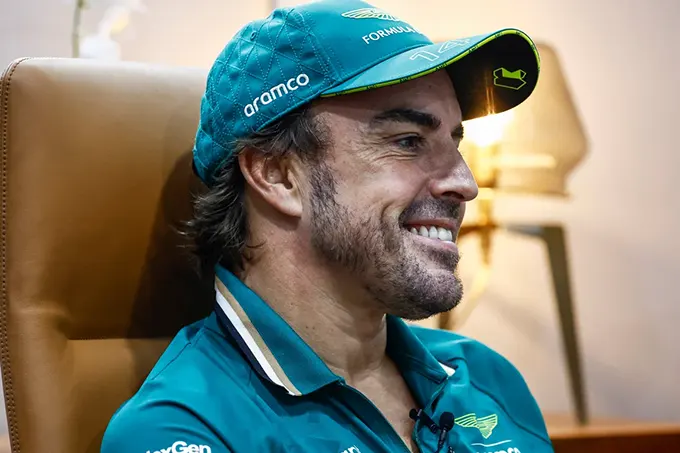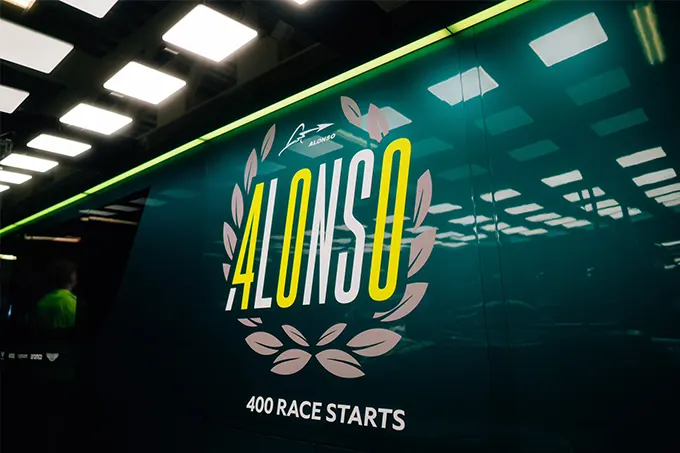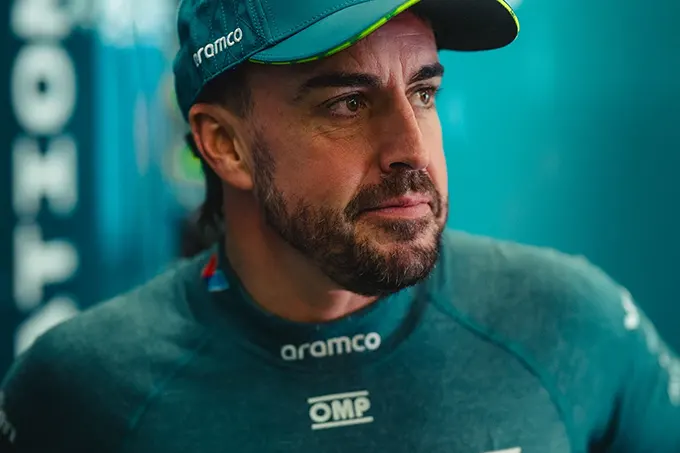Fernando Alonso reaches his 400th F1 race, reflecting on his love for the sport and career-long dedication.
Fernando Alonso will celebrate his 400th Formula 1 appearance this weekend, a historic milestone as he becomes the first driver to reach this number. The Aston Martin F1 driver reflects on this long journey and looks ahead to the next chapter of his career.
“It’s nice to achieve success. Obviously, championships and race wins are what matter most to us as drivers,” said the two-time world champion and double Le Mans 24 Hours winner.
“But at the same time, it shows my love for the sport and the discipline I’ve maintained to compete at a very high level for over 20 years. During that time, I’ve achieved what every racing driver dreams of: becoming a world champion.”
“I’ve also had incredible experiences, competing against some of the best drivers in the world on the greatest circuits. I don’t think I’ll add another 400 races to my total, but I hope I’ve still got at least 40 or 50 more to come in the next couple of years.”
When asked about the secret to his longevity, the Spaniard explained that modern F1 is less physically demanding than it once was: “I think today’s F1 is easier on the body compared to previous eras, which allows you to race for longer.”
“Of course, it’s still a huge physical challenge, but F1 technology has evolved, and the cars are a bit more forgiving for the drivers. Seat comfort, safety equipment, helmets—everything has moved in the right direction.”
“On Sundays, the race pace is also more manageable than it used to be. Nowadays, the cars start the race with a full fuel load, and we have to manage tyres and energy throughout, so we’re not pushing the cars to their limits for long periods.”
“The only physically demanding part of the weekend is usually qualifying, which is very short, so I don’t have any trouble keeping up with the younger drivers in terms of fitness.”
“I still have a lot to achieve in this sport”
As for his motivation, Alonso explains that it stems primarily from his passion for racing: “I still love F1 and motorsport just as much. I love the competition and try to give my best every day. I’m always looking for that extra one per cent to keep improving.”
“I still have a lot to accomplish in this sport, and the project we have here at Aston Martin is exciting. We have a new era of regulations coming in 2026, which brings new opportunities with partners like Aramco and Honda, and people like Adrian Newey joining us.”

The two-time world champion reflects on what he’s learned over his years at the highest level: “You learn not to get too carried away with individual results over the years and to quickly move on, no matter the outcome of the previous race; there’s always another challenge ahead.”
“This sport moves so fast that you don’t have time to look back. It’s also crucial to have a good team around you because F1 is as much a team sport as it is an individual one, and without that, over the years, I wouldn’t have achieved the success I’ve had.”
This weekend, Formula 1 heads to Mexico, a circuit known for its vibrant atmosphere, with part of the track running through a stadium: “I always enjoy racing in Mexico. The fans here are incredibly passionate, and they create an amazing atmosphere.”
“Many of them are often dressed in Aston Martin Aramco Racing Green. It’s a historic circuit, and the Foro Sol stadium section at the end of the lap is one of the most iconic places to drive a Formula 1 car.”
Altitude makes both the body and F1 cars “work harder”
One of the key features of the Autodromo Hermanos Rodriguez is its elevation, situated over 2,000 metres above sea level. Alonso outlines the effects of this altitude on both the cars and the drivers’ bodies.
“As drivers, we try to train in special facilities that can simulate the high altitude before the race, so that our bodies are as prepared as possible. The high altitude means there’s less oxygen available, which forces our bodies to work harder.”
“For the cars, the thinner air significantly reduces drag, allowing us to reach higher speeds on the straights, but we run similar-sized wings to those we’d use in Monaco, as downforce is also much lower.”
“The engine works harder because there’s less oxygen to draw in, and less air flows through the radiators, air intakes, and ducts, leading to reduced cooling. This means things run hotter, or we need much larger ducts to ensure sufficient cooling.”
- You may also like>Vasseur: McLaren’s rear wing breaks FIA rules in Baku
- Also make sure you follow us on social media>Facebook and>Twitter

Alonso Marks 400 Races, Showcasing His Enduring Passion for F1 Alonso Marks 400 Races, Showcasing His Enduring Passion for F1. 2024 Alonso Marks 400 Races, Showcasing His Enduring Passion for F1
